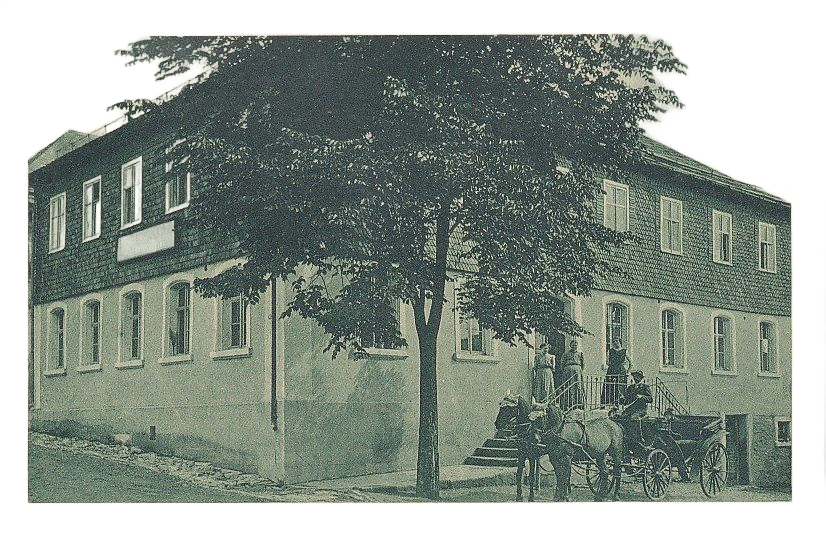ABOUT US
About Us
Our guesthouse, Weißes Lamm, has been an integral part of Nordhalben for many years. We combine hospitality with practical solutions for fitters and tradespeople.
With fair prices, flexible offers and personal support, we want to make your stay as pleasant as possible.
Our values
Hospitality: Every guest receives a personal and warm welcome.
Regionality: We work closely with partners from the region and promote a connection to the Franconian Forest.
Sustainability: Our house adheres to environmentally friendly standards and resource conservation.
Flexibility: Whether short stay or long-term booking – we cater to your needs.
Fairness: Transparent pricing and honest communication are a matter of course for us.

Our story
A house with history – a place of encounter for around 160 years.
Right in the heart of our region stands a house that has seen a lot, experienced a lot, and heard even more stories: Today's
Guesthouse White Lamb.
Its history dates back to the middle of the 19th century – a time when horse-drawn carriages dominated the streets, gaslight illuminated the evenings, and craftsmanship was still purely manual.
Around 1860 – Construction of a stately sandstone house
Around the year
1860 The house was built – solidly, durably, and with great craftsmanship using local materials.
Sandstone and built of slate.
The building materials, which were plentiful in the region, already shaped the appearance of many buildings back then and still stand for durability and down-to-earthness today.
From the beginning, the house was more than just a residential building: it served as
Inn and hostel, where travelers, craftsmen and merchants found rest. Those who stopped here could refresh themselves, exchange stories and experience a temporary piece of home.
End of the 19th century – The heart of village life
Over the years, the inn developed into a
popular meeting place for the villagers and travelers alike.
Here, people celebrated, danced and sang – whether at village festivals, family celebrations or spontaneous evenings at the regulars' table.
The house was a meeting place where generations passed from one another.
1914–1945 – War Years and New Beginnings
The first decades of the 20th century presented the house – like all of Germany – with major challenges.
The
both world wars They left their mark, but the solid sandstone walls withstood the ravages of time.
While many houses were destroyed, this house offered refuge, warmth, and a place of togetherness.
After the difficult years, a new beginning followed. People were looking for normality, community and confidence again – and that's exactly what they found here.
In the post-war years, the house once again became a vibrant center of social life.
1950s–1980s – Tradition meets change
With the economic boom after the war, life in and around the house also changed.
The simple village inn became a
popular economy, where workers, families and travelers stopped.
Here, people ate well, celebrated and laughed – and often played music until late into the night.
Many who passed by during that time still remember the warm atmosphere, the aroma from the kitchen, and many a cheerful gathering in the dining room.
1990s–2000s – A House in Transition
Like many traditional inns in rural areas, they changed
The times are the same here.
The traditional village inn was less frequently visited, and the building stood empty for a time. But its story was far from over – the house was simply waiting for new hands to breathe new life into it.
2010 – A new chapter: The Bayerkuhnlein family takes over
In the year
2010 The house came into the possession of
Bayerkuhnlein family above.
With great respect for the building's history and meticulous attention to detail, extensive work began.
Renovation work.
The aim was to preserve the original character of the house while creating modern comfort.
The former inn has been transformed into a
Guesthouse, especially
Craftsmen, fitters and travelers offers a comfortable temporary home.
Guests appreciate the family atmosphere, the practical amenities, and the special charm that only a house with history can exude.
2020 – Generational change and future outlook
In the year
2020 The Bayerkuhnlein family handed over the guesthouse to their daughter
Nicole Thoma, who has since continued to run the house with great dedication and passion.
She continues the family tradition and combines tradition with modern hospitality.
With attention to detail, an open ear for her guests, and a keen sense for what makes a house come alive, she tells the story of the
The White Lamb guesthouse is entering a new era.
Today – history meets hospitality
Today the
GuesthouseWhite lamb for
Down-to-earthness, reliability and warmth.
The old sandstone walls tell of bygone eras, while modern rooms and a warm hostess provide contemporary comfort.
Whether tradesmen, fitters or business travelers – small or large groups – anyone who stays overnight here feels:
This house has a soul.
And it will surely experience, tell, and preserve many more stories.
🕰️
Conclusion
From a 19th-century inn to a modern guesthouse – the building has
more than 160 years of history behind him.
It has
Wars, change and generational shifts survived without losing any of its special character.
Today it is a symbol of the fact that
Tradition and progress They can go hand in hand – and that true hospitality is timeless.
The guesthouse has a long tradition in Nordhalben. Originally started as a small accommodation for travelers passing through, the Weisses Lamm has developed into a modern guesthouse that meets the needs of vacationers, business travelers, and tradespeople alike. Despite this development, our values have remained the same:
Warmth, reliability and a family atmosphere.










